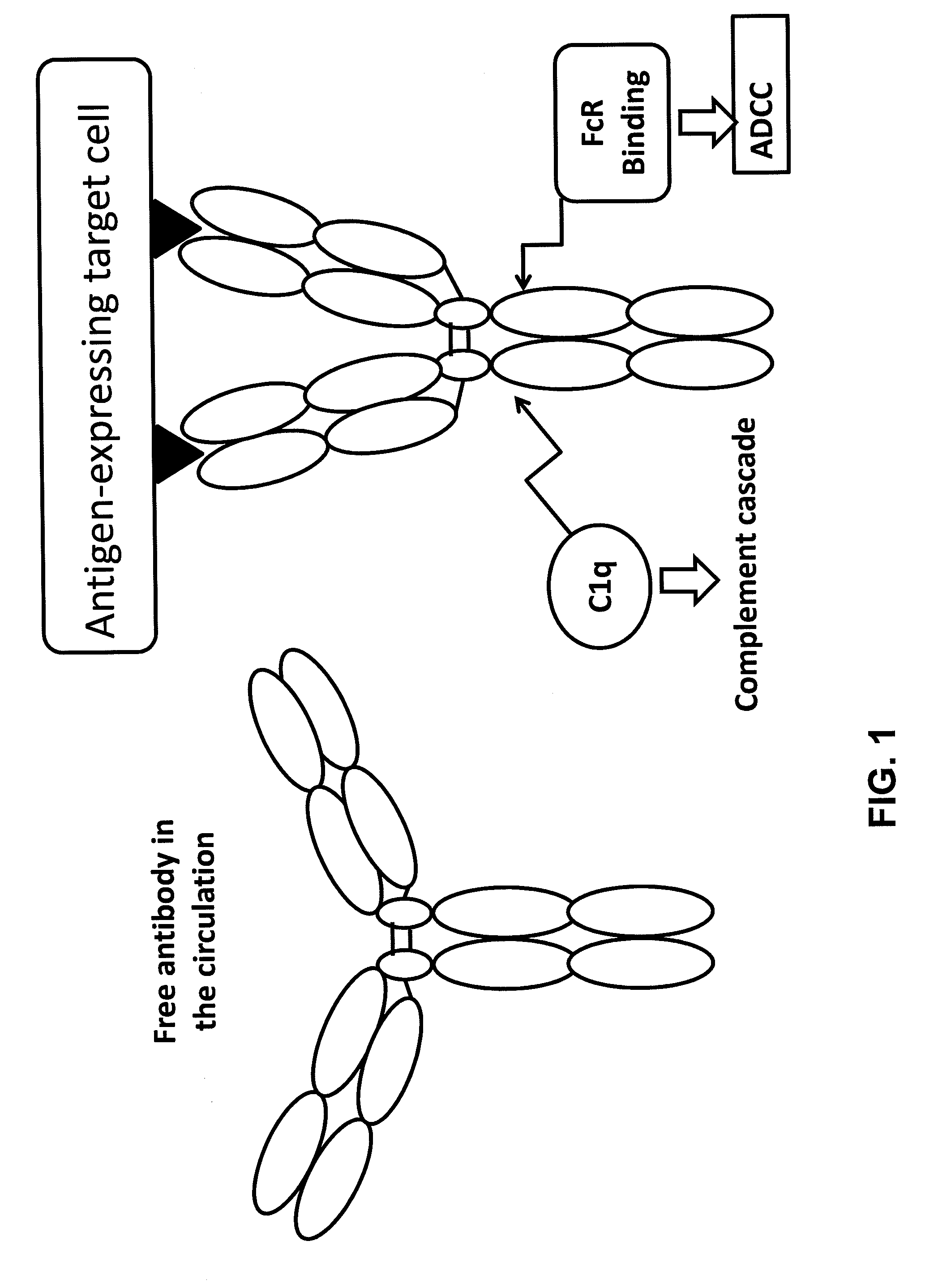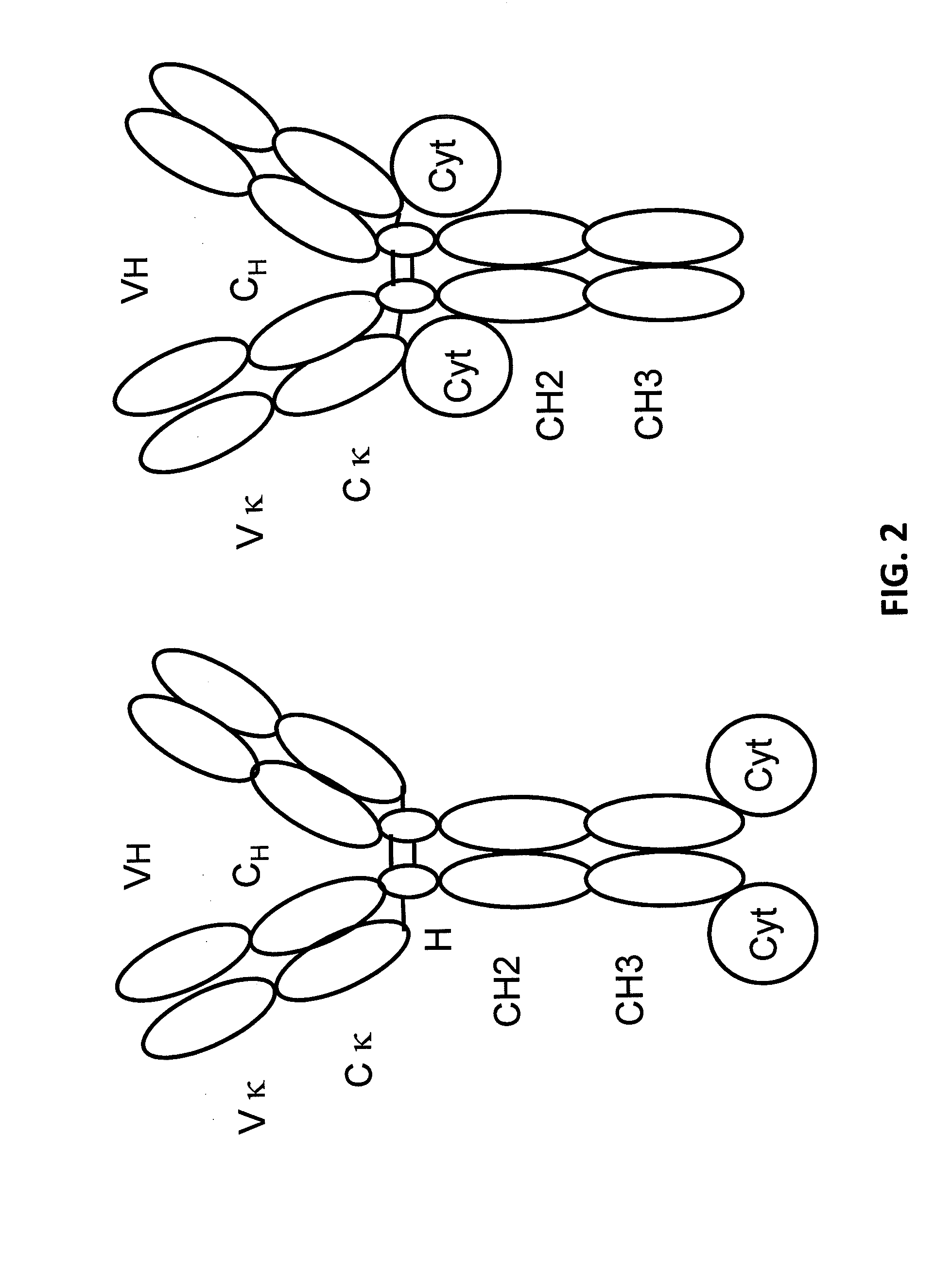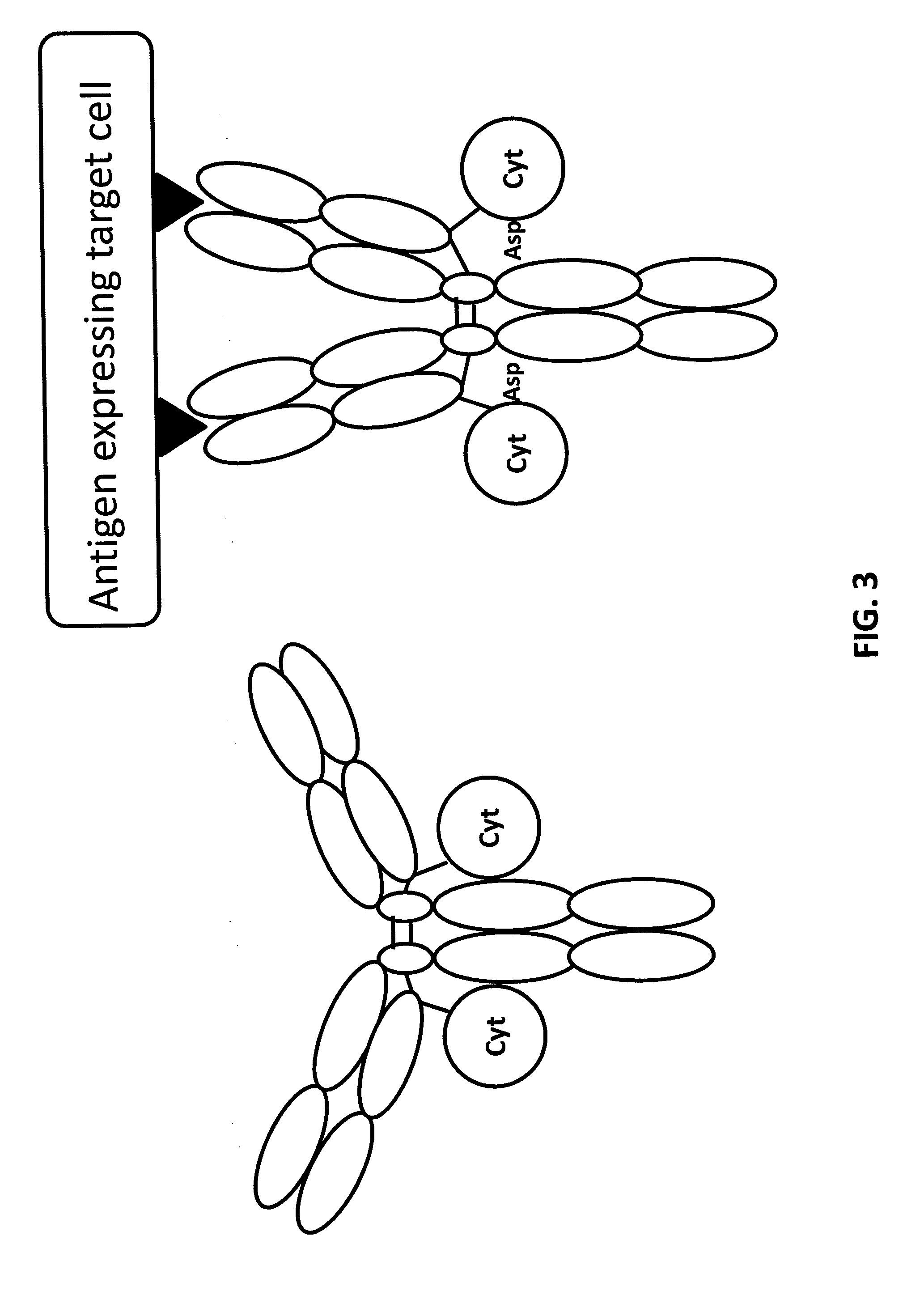Light chain immunoglobulin fusion proteins and methods of use thereof
a technology of immunoglobulin and light chain, applied in the field of therapeutic antibodies and antibody fusion proteins, can solve the problems that the lowest activity level may not be optimal depending on the intended use, and achieve the effects of reducing steric interference, increasing the cellular specificity of a protein, and reducing its activity
- Summary
- Abstract
- Description
- Claims
- Application Information
AI Technical Summary
Benefits of technology
Problems solved by technology
Method used
Image
Examples
example 1
Genetically Engineered Immunocytokines Having a Cytokine Fused to the C-Terminus of an Antibody Light Chain
[0118]In some embodiments, an antibody against a therapeutic target is engineered to include a cytokine fused to the C-terminus of the antibody light chain.
[0119]For example, an antibody against GD2 is engineered to include IL2 fused to the C-terminus of the light chain. GD2 is a disialoganglioside expressed on tumors of neuroectodermal origin, including human neuroblastoma and melanoma, with highly restricted expression on normal tissues, principally to the cerebellum and peripheral nerves in humans. The relatively tumor-specific expression of GD2 makes it an attractive target for immunotherapy, for example with monoclonal antibodies. Melanomas, sarcomas, and neuroblastomas abundantly express GD2 on the cell surface where it is susceptible to immune attack by antibodies. Overexpression of GD2 on these tumors is striking, as is the frequency of clinical responses after treatmen...
example 2
Production of Genetically Engineered Immunocytokines Having a Cytokine Fused to the C-Terminus of an Antibody Light Chain
[0126]Expression vector DNA is used for transient expression of the protein in human 293F cells (InVitrogen) using standard protocols.
[0127]Before generating stable cell lines for long-term production of the anti-GD2 immunocytokine, the ability of the vector to express the desired protein is tested using transient expression and analysis of small amounts of the protein secreted from transfected cells. This is accomplished by producing milligram quantities of the plasmid DNA from the bacterial host and purifying the DNA using high resolution chromatography. Endotoxin-free DNA is used to transfect 293F cells in suspension culture and after several days of culture, the conditioned culture media is harvested. A small amount is incubated with protein A Sepharose beads by gentle mixing and then the captured protein is eluted in gel electrophoresis buffer. Half of the sa...
example 3
Structure of an Immunocytokine Having a Cytokine Fused to the Light Chain Constant Region
[0138]FIG. 5 shows that a fusion protein having a sequence shown in SEQ ID NO: 1 binds to both an anti-idiotype antibody (1A7) specific for the 14.18 antigen binding site and is detected in the bound state by an anti-IL2 antibody. This ELISA shows that IL2 is properly folded and exposed. The constructs tested are hu14.18-IL2 (humanized 14.18 with IL2 fused to the heavy chain); ch14.18-IL2-H (IL2 fused to the H chain but with a linker modification increasing half-life compared to hu14.18-IL2); and ch14.18-IL2-L containing the fusion protein of SEQ ID NO: 1 (IL2 fused to the light chain as described herein). The binding to the 1A7 antibody mimics binding to GD2 and is an easier assay to perform on a regular basis. It also indicated that the V regions are in their properly folded state for binding to GD2. Nonetheless, natural GD2 binding is also tested using tumor cells by flow cytometry and when t...
PUM
| Property | Measurement | Unit |
|---|---|---|
| concentration | aaaaa | aaaaa |
| concentration | aaaaa | aaaaa |
| radioactivity | aaaaa | aaaaa |
Abstract
Description
Claims
Application Information
 Login to View More
Login to View More - R&D
- Intellectual Property
- Life Sciences
- Materials
- Tech Scout
- Unparalleled Data Quality
- Higher Quality Content
- 60% Fewer Hallucinations
Browse by: Latest US Patents, China's latest patents, Technical Efficacy Thesaurus, Application Domain, Technology Topic, Popular Technical Reports.
© 2025 PatSnap. All rights reserved.Legal|Privacy policy|Modern Slavery Act Transparency Statement|Sitemap|About US| Contact US: help@patsnap.com



